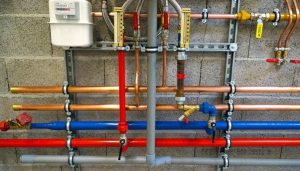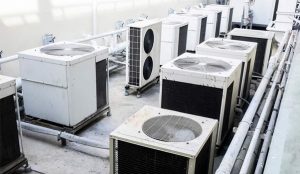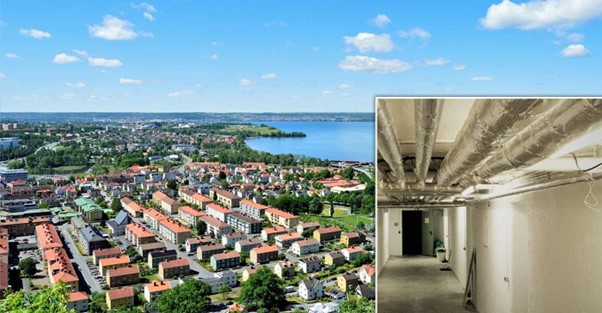Implementing the best practices of HVAC will ensure optimal performance, energy savings, and extended system life.
Worth mentioning is that the HVAC systems have historically also been called environmental control systems, although today they are often referred to as heating, ventilation, and air conditioning systems.
The air conditioning systems typically provide year-round control of certain atmospheric conditions, including temperature, humidity, cleanliness, and air movement. Let’s discuss more about how these systems should be managed and the best practices for doing so.
Here are some principles to design a proper HVAC system
HVAC design principles include basic theory of system operation and factors that determine the size and capacity of equipment installed in the system. Once you understand the basics, you will get information about the different types of air conditioning systems.
The location, elevation and orientation of the structure are such that the impact of weather conditions (wind, sun and precipitation) on the building’s heating and cooling loads can be predicted. Read more about HVAC systems.
Dimensions of the building (wall area, roof area, glass area, floor area, etc.). The shape of the building (L-shaped, A-shaped, rectangular, etc.), affects the location of equipment, the type of heating and cooling system used, and the location of ducts or pipes. The type of material (wood, masonry, metal, etc.) used to construct the building.
There are many factors to consider when selecting and designing an HVAC system for a building. These decisions ultimately affect the building’s energy efficiency. Key factors for optimizing energy efficiency are ventilation, zone control, heat recovery and operations.
A home HVAC plan is designed to provide year-round comfort and healthy indoor air quality. The system may include a central unit or separate units for heating and cooling, air filters to improve air quality, and ventilation systems to circulate fresh air throughout the home.
As you can see, designing an HVAC duct system is a lengthy process, especially if you have little or no knowledge about it. However, it is not impossible to design it yourself. Once you have your HVAC equipment, diffusers, and grilles arranged, prepare a layout diagram or draw it. You will design the ducts on the drawing. Read more about HVAC systems.
Another very important aspect in the HVAC best practices field is general professional ethics. In an increasingly connected and transparent world, professional ethics becomes especially important. Unethical behavior can discourage customers from patronizing your business or even get you fired.

Below are some factors that explains the best practices for HVAC
Appropriate size
Make sure HVAC systems are sized appropriately for the space they serve. Undersized systems have difficulty keeping up with demand, leading to inefficiency, while oversized devices turn on and off frequently, wasting energy and causing wear and tear.
Regular maintenance
Scheduled maintenance is essential for HVAC systems. Clean filters, coils and vents regularly to improve airflow and system efficiency. Check refrigerant levels, tighten electrical connections, and lubricate moving parts to prevent problems.
Smart thermostat and control
Switch to smart thermostats and control systems that allow for precise temperature adjustment and scheduling. Smart technology allows remote monitoring and adjustment, optimizing energy consumption based on capacity usage and outdoor conditions.
Optimize airflow
Ensure good air circulation by cleaning and maintaining ducts. Balanced airflow helps prevent component overworking, improves indoor air quality, and improves overall system performance.
Energy saving equipment
Invest in highly efficient ENERGY STAR rated HVAC equipment. Modern systems often come with advanced features like variable speed motors and two-stage compressors, providing better control and energy savings.
Partition system
Implement a zoning system to control the temperature in different zones independently. This allows for personalized comfort levels, reduces system load and optimizes energy consumption.
Sealing and insulation
Proper insulation and sealing of windows, doors and ducts helps minimize heat loss or gain. This reduces the workload on the HVAC system and contributes to energy savings.
Daylighting strategy
Take advantage of natural light to reduce the need for artificial lighting and therefore cooling. Use blinds, shades and other window treatments to control heat absorption during peak sun hours.
Presence sensor
Integrated occupancy sensors to adjust HVAC settings based on room occupancy. Uninhabited areas can be cooled, reducing energy consumption without affecting comfort.
Training and education
Educate building residents about energy-saving measures, such as properly using thermostats and promptly reporting maintenance issues. Well-informed users contribute to the overall efficiency of the HVAC system.
Safety measures
It is important to keep safety factors in mind when installing large equipment. HVAC safety guidelines urge workers to use common sense, analyze potential hazards, and always use personal protective equipment (PPE). Proper safety precautions are fundamental to preventing injuries and loss of valuable work time.

The key benefits of a well functioning HVAC system
- The success of an HVAC system is directly related to the comfort level of the building.
- HVAC systems require significant floor space to accommodate the unit(s) as well as distribution equipment.
- HVAC units require a significant investment.
- HVAC systems account for the majority of building operating costs.
- The design of the HVAC system goes hand in hand with the architecture of the building. -Deciding on your HVAC design as early as possible will ensure that energy code requirements set by the Department of Energy are met.
- Regular maintenance will prolong the life of your system, reducing the likelihood that you’ll soon have to spend a lot of money on an HVAC installation.
- Additionally, HVAC best practices play an important role in various industries such as healthcare, food storage, and data centers, where precise control of temperature and humidity is needed. Overall, HVAC systems improve comfort, health, and overall quality of daily life.
Legal obligation and HVAC best practices by OSHA
HVAC safety guidelines urge workers to use common sense, analyze potential hazards, and always use personal protective equipment (PPE).
Proper safety precautions are fundamental to preventing injuries and loss of valuable work time. To reinforce this, it is extremely important that you understand all HVAC safety tips.
OSHA, in addition to providing safety guidance to workers, also helps identify the types of hazards employees may encounter in the workplace.
For HVAC workers in particular, this includes risks such as:This is not an exhaustive list, but it details some of the most common risk factors for HVAC workers addressed by OSHA. HVAC workers working on roofs can contribute to these statistics.
According to OSHA, fall protection equipment is required for anyone working above a certain height, which ranges from 4 to 8 feet depending on the industry, or on a specific roof height.
OSHA regulations detail how to use the refrigerants safely, how to store them, and how to respond if exposed to refrigerants in the workplace.
Conclusion – What’s the best HVAC practices?
By following these HVAC best practices, building owners and facility managers can achieve optimal performance, energy efficiency and savings.
Regular maintenance, technology upgrades and strategic considerations together contribute to a sustainable and comfortable indoor environment.
In short, the HVAC (heating, ventilation and air conditioning) system is a very important element of a healthy, comfortable and energy-efficient building. There are different types of installations depending on the location and size of the building.
Three common types are centralized, packaged, and individual or decentralized. Since the HVAC system is the largest consumer of energy and requires best practices in a building, it is important to ensure that energy-saving practices are in place to ensure reduced energy consumption, costs, and house gas emissions.







